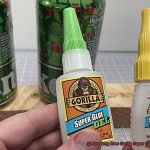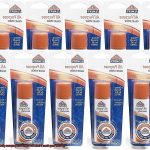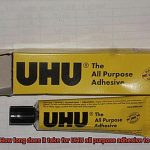Prepare to enter the enchanting realm of lash perfection, where captivating eyes and fluttery lashes reign supreme. For those who understand the allure of a flawless gaze, individual lash glue is nothing short of a magical elixir that grants us the power to transform our eyes into works of art, surpassing even the most fabulous mascara.
But amidst this glamorous world, one question lingers like a tantalizing mystery: just how long does it take for individual lash glue to dry? We’ve all experienced that moment of suspense, anxiously awaiting the glue’s transformation from liquid to solid, afraid that any movement might shatter our exquisite lash masterpiece. Fear not, my fellow beauty enthusiasts, for today we embark on a journey to unveil the secrets behind this crucial aspect of lash application.
In this article, we will delve deep into the intricate dance of individual lash glue drying times. We shall unravel why these times vary and equip you with invaluable tips to ensure a seamless finish every single time. So grab your favorite pair of lash strips, prepare to become an expert in your own right, and let us plunge headfirst into the captivating world of lash adhesive drying times.
Factors Influencing Drying Time
Contents
- 1 Factors Influencing Drying Time
- 2 Common Drying Times of Different Lash Glues
- 3 Quick-Drying Formula Advantages
- 4 Extended Drying Times of High-Quality Glues
- 5 Approximate Estimates on Packaging Labels
- 6 Humidity and Temperature Effects
- 7 Too Much Glue and Its Impact on Drying Time
- 8 Proper Storage and Handling for Optimal Results
- 9 Conclusion
When it comes to applying individual eyelash extensions, one question that often arises is, “How long does it take for the lash glue to dry?” The drying time of individual lash glue can vary depending on various factors. Let’s explore these factors and gain a better understanding of why your lash glue may take longer or shorter to dry.
Firstly, the type of lash glue used plays a significant role in drying time. There are two main types of lash glues – adhesive and semi-adhesive. Adhesive lash glues contain stronger bonding agents, allowing them to dry relatively faster. On the other hand, semi-adhesive lash glues have a lower concentration of bonding agents, leading to a longer drying time.
Another factor to consider is humidity levels. Higher humidity slows down the drying process, while lower humidity accelerates it. Lash glue relies on moisture in the air to cure and bond properly. In areas with high humidity, like tropical climates, it may take longer for the lash glue to dry completely.
Temperature also influences drying time. Higher temperatures speed up the drying process, while colder temperatures slow it down. However, extreme temperatures can have adverse effects on lash glue, affecting its overall performance and durability.
The way you apply the lash glue can also impact its drying time. A thin and even layer of glue will dry faster compared to a thick and uneven application. It is essential to apply an adequate amount of glue to ensure proper adhesion without excess residue, which can prolong drying time.
The quality of the lash glue itself is another crucial factor. High-quality lash glues often contain superior ingredients and bonding agents that enable them to dry faster and provide a strong hold. It is important to choose a reputable brand and read reviews before purchasing lash glue to ensure optimal results.
Furthermore, the type of lashes being used can influence drying time as well. Different materials, such as synthetic or natural lashes, may react differently with lash glue and require varying amounts of time to dry. Additionally, the thickness and density of the lashes can affect how quickly the glue cures and bonds.
Lastly, the presence of adequate air circulation can help speed up drying time. If the area where the lashes are being applied has poor ventilation or stagnant air, it may take longer for the glue to dry. Ensuring proper airflow during and after application can facilitate a quicker drying process.
Common Drying Times of Different Lash Glues
When it comes to lash glue, drying time is a crucial factor to consider. We all want our lashes to dry quickly, but we also want them to stay in place. So, what are the common drying times of different lash glues? Let’s dive into this topic and explore the various factors that influence drying time.
First and foremost, let’s understand that the drying time of lash glue can vary depending on a few key factors. These factors include the type of adhesive used, the humidity level in the environment, and even the technique used to apply the glue.
Now, let’s talk about strip lash glues. These glues are designed for quick and easy application, which means they usually have faster drying times compared to individual lash glues. When using strip lash glues, you can expect them to dry within a few seconds to a minute. However, keep in mind that this can vary depending on the brand and specific product you choose.
On the other hand, individual lash glues tend to have slightly longer drying times. This is because individual lashes require precise placement, and the glue needs a bit more time to bond with each lash. In general, some individual lash glues may take around 30 seconds to a minute to dry completely, while others may require up to 2-3 minutes.
To ensure optimal results, always read the instructions provided by the manufacturer of the lash glue. They usually mention the recommended drying time for their product. By following these instructions, you can be confident that your lashes will stay in place throughout the day without any mishaps.
In addition to drying time, it’s important to note that some lash glues may require a curing period after application. This period allows the adhesive to set and bond with your natural lashes, providing a secure hold. The length of this curing period can vary from a few hours to overnight. So, be patient and allow enough time for the glue to fully set.
Quick-Drying Formula Advantages
Quick-drying formulas of individual lash glue have taken the lash world by storm, and for good reason. These game-changing products offer a plethora of advantages that will make you rethink your lash routine. Let’s delve into these benefits and discover why quick-drying formulas are the must-have addition to your beauty arsenal.
First and foremost, let’s talk about time. With a quick-drying formula, there’s no more waiting around for your lash glue to dry. Say goodbye to those endless minutes of twiddling your thumbs and hello to efficiency. These formulas dry in a flash, allowing you to apply your lashes and be out the door in no time. Perfect for those busy mornings or when you’re running late but still want fabulous lashes.
But it’s not just about speed – quick-drying formulas also deliver when it comes to hold. These adhesives form a strong bond with your natural lashes, ensuring that your extensions stay put for longer periods. No more worrying about lashes coming loose during important events or falling off at the most inconvenient times. With quick-drying formulas, you can confidently rock your lash extensions and slay the day like never before.
Speaking of confidence, quick-drying formulas often come with improved waterproof properties. This means that no matter the environment – whether it’s a sweaty workout session or a pool party – your lashes will hold up beautifully. These water-resistant wonders won’t lose their shape or come undone, allowing you to dive right in and make a splash without worrying about your lashes.
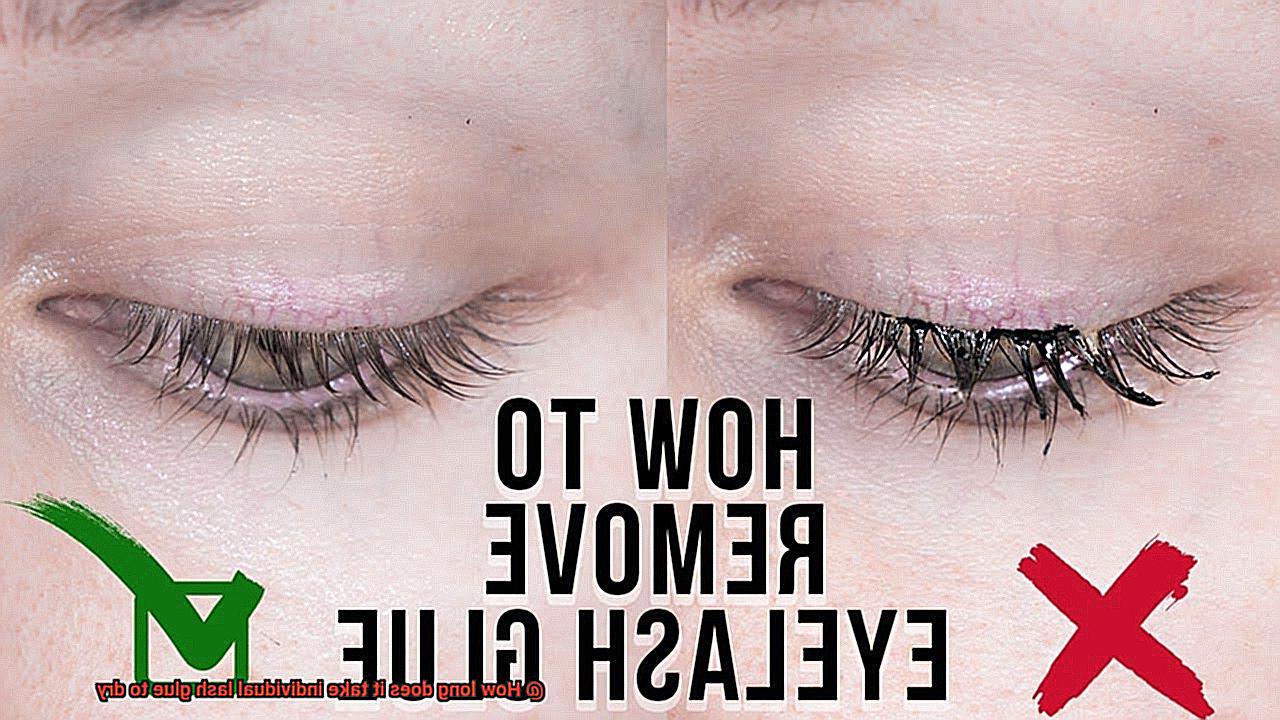
Now, let’s talk convenience. The fast-drying nature of these formulas makes application a breeze. No more accidental smudges or smears – these glues dry before you know it, giving you less chance for mishaps. This is especially beneficial for beginners or anyone who struggles with precise application techniques. Quick-drying formulas make achieving flawless lashes easier than ever.
And hey, let’s not forget about comfort. Quick-drying formulas often have reduced odor compared to traditional glues. No more dealing with strong, unpleasant smells during the application process. It’s a win for your nose and a win for your lash game. Say goodbye to those eye-watering moments and hello to a more pleasant lash experience.
Before you rush out to grab your own quick-drying formula individual lash glue, remember to always read the product label and perform a patch test. Some individuals may have allergies or sensitivities to certain ingredients, so it’s important to ensure that the formula is suitable for you.
Extended Drying Times of High-Quality Glues
Here’s the catch: extended drying times. Unlike their quick-drying counterparts, high-quality glues take a bit longer to set and dry completely. And let’s be honest, it can be a tad frustrating for lash artists and clients alike.
So, why do these top-notch glues take their sweet time to dry? It all boils down to the secret ingredients nestled within their formula. These ingredients, carefully selected to enhance adhesive strength and longevity, demand more time to fully dry and set.
For lash artists, this means allocating extra minutes for each application. Patience is key as the glue needs ample time to dry properly before moving on to the next step. By acquainting themselves with the specific drying times of different high-quality glue brands, lash artists can master the art of time management.
But what about clients? Well, dear clients, knowledge is power. Your trusty lash artist should enlighten you about these longer drying times. They’ll advise you to resist the urge to touch or manipulate your lashes during those crucial first few hours after application. This precautionary measure ensures no potential damage or displacement of your exquisite extensions.
By understanding and embracing these extended drying times, both lash artists and clients can revel in the splendor of flawless lashes that defy time’s constraints. Don’t let the ticking clock discourage you from experiencing the wonders of high-quality glues. Embrace the wait, have faith in their strength, and relish in those mesmerizing lashes that will stand the test of time.
Approximate Estimates on Packaging Labels
Let’s explore the factors that come into play and reveal why these estimates can vary.
- Humidity: The level of moisture in the air can impact how quickly or slowly the glue dries. In humid environments, where moisture hangs heavy like a summer storm, drying time may be longer. Conversely, in drier climates, where moisture is as rare as a unicorn sighting, the glue may dry more quickly.
- Temperature: Like Goldilocks and her porridge, temperature is key to finding the sweet spot for lash glue drying. If it’s too hot, the glue might dry too fast before you even have time to blink. If it’s too cold, well, you might be waiting for what feels like an eternity for the glue to set. Finding that perfect temperature is like finding the right balance between hot and cold showers – it’s all about personal preference.
- Application Technique: The artistry of applying lash glue also impacts drying time. If you’re a pro who has mastered the delicate dance of applying just the right amount of glue, your lashes may dry faster. But if you’re still a beginner, taking your time to perfect your technique, a longer drying time might be needed.
- Lash Density and Type: Your lashes are unique snowflakes – no two are exactly alike. The density and type of your lashes affect how well the glue adheres and subsequently how long it takes to dry. Sparse lashes may dry faster as there is less surface area to cling to. Luxurious lash lines may require a tad longer for drying.
- Amount of Adhesive Applied: Remember that old saying, “Less is more”? Well, it applies here too. Applying too much adhesive can extend drying time. So, be mindful of how much glue you use to avoid playing the waiting game for too long.
Remember, safety is paramount. Perform a patch test before diving into using any new product, and discontinue use immediately if you experience discomfort or allergic reactions.
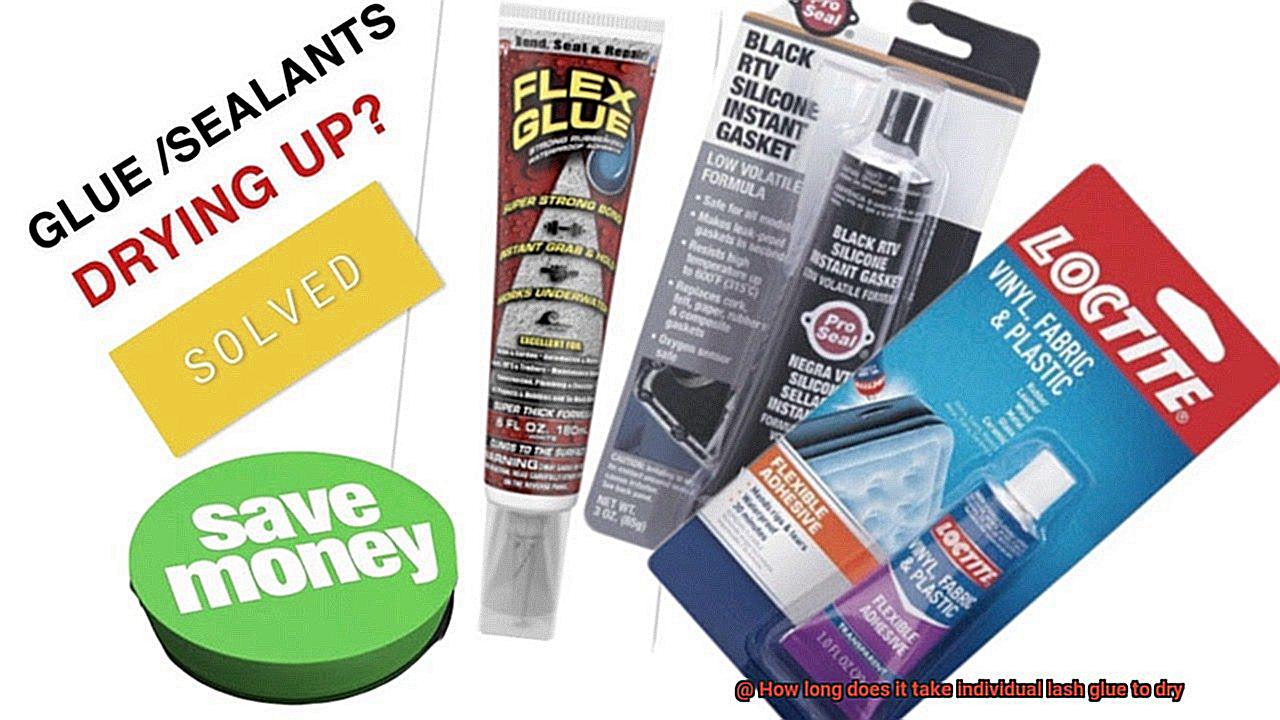
Now that you understand why drying time on packaging labels can vary, it’s essential to follow the manufacturer’s instructions. They have dedicated countless hours to perfecting their formulas and testing them under various conditions to provide you with the best guidance.
Humidity and Temperature Effects
When it comes to achieving stunning lash extensions, finding the right lash glue is key. However, many may not realize the significant impact that humidity and temperature can have on the drying time of lash glue. In this article, we will delve into the secrets behind these two factors and their influence on lash glue drying time.
Humidity: The Moisture Factor
Humidity, which refers to the amount of moisture in the air, plays a critical role in lash glue drying time. High humidity levels create a barrier that hinders the evaporation of water-based components in the glue. This slowdowns the curing process, resulting in a longer drying time. Conversely, low humidity speeds up drying time by facilitating faster moisture evaporation.
Temperature: The Heat or Coldness Factor

Temperature also plays a significant role in how quickly lash glue dries. Higher temperatures accelerate the drying process by increasing the rate of evaporation. On the other hand, lower temperatures slow down drying time as they reduce moisture evaporation.
Extreme Weather Conditions: The Challenges
Extreme weather conditions can pose challenges when applying lash extensions. In areas with high humidity, using a lash glue with a longer drying time allows for proper bonding. Conversely, quick-drying lash glues are more advantageous in regions with low humidity or cold temperatures. Adapting to seasonal changes ensures successful lash extension applications.
Creating a Controlled Environment:
To optimize humidity and temperature levels, lash artists should strive to create a controlled environment in their workspace. Dehumidifiers or humidifiers can be used to maintain consistent moisture levels, while temperature-regulating devices ensure a comfortable environment for both artist and client.
Client Comfort and Safety:
While faster drying glues may be convenient, they may increase the risk of irritation or discomfort for clients with sensitive eyes. Therefore, finding a balance between drying time and client comfort is crucial. Lash artists should prioritize safety and consider individual needs when determining the appropriate drying time for lash glue.
Too Much Glue and Its Impact on Drying Time
When it comes to applying false lashes, we’ve all been guilty of using a bit too much lash glue. In our rush to get ready, we squeeze out more adhesive than necessary, not realizing the impact it can have on drying time. But fear not, lash lovers, I’m here to shed some light on the subject.
Using an excess amount of lash glue can significantly slow down the drying process. Why, you ask? It’s quite simple, really. When there’s too much glue, there’s also an excess of moisture that needs to evaporate.
And let’s face it, when you’re eagerly waiting for your lashes to dry, every second can feel like an eternity. Not only does this delay your glam time, but it can also make the adhesive less effective. This means your lashes may not adhere properly or worse, they might become loose and start lifting throughout the day. Talk about a lash disaster.
But wait, there’s more. The consequences of using too much glue don’t stop there. Oh no, my friends. It can also create a messy application that’s far from desirable. Picture this: you’re excitedly applying your lashes, and before you know it, excess glue starts seeping out from the lash band and onto your eyelids. Not only is this uncomfortable and potentially irritating, but it’s also definitely not the glamorous look you were going for.
Now that we understand the problems caused by excessive lash glue, what can we do to prevent this sticky situation? First things first, always follow the instructions provided by the lash glue manufacturer. They know their product best and will give you the recommended amount to use. Trust them.
But in case you find yourself in a gluey mess (we’ve all been there), don’t panic. There are a few tricks you can try to speed up the drying process. Gently blotting the excess glue with a clean tissue or cotton swab can help remove some of the moisture. And if you’re feeling fancy, grab a fan or blow dryer on a cool setting to give your lashes a little extra airflow. Just remember, don’t go overboard with the heat, as it can make the adhesive brittle and ineffective.
Proper Storage and Handling for Optimal Results
If you want to achieve those envy-inducing, stunning lashes with individual lash extensions, then proper storage and handling of your lash glue is absolutely crucial. Let’s dive into the why and how to ensure optimal results that will leave everyone mesmerized.
First things first, let’s talk about storage. Your lash glue is like a delicate flower that prefers cool temperatures. So, keep it chill, my friend. Find a cozy spot away from direct sunlight and any heat sources. Trust me, your glue will be forever grateful. Heat can mess with its bonding powers and leave you with lashes that won’t stay put. And we definitely don’t want that catastrophe.
Now, let’s get down to sealing the deal. I’m talking about making sure that glue bottle is tightly sealed when not in use. Air exposure is the enemy here, my friend. It can cause the glue to thicken or even dry out completely. And we all know useless glue is a big no-no. So, remember to close that bottle tight and store it upright to prevent any accidental leakage disasters.
Moisture is another villain in the lash glue world. Keep it far away from water and humidity, my friends. Moisture can seriously mess with the adhesive properties of the glue, resulting in poor adhesion and shorter drying times. So, no steamy bathrooms for your precious glue or hanging out near sinks where water can sneak up on it.
Now it’s time to talk about handling our precious lash glue with care. One common mistake people make is shaking the bottle vigorously before using the glue. Easy there, tiger. Shaking can introduce annoying air bubbles into the adhesive, sabotaging its performance. Instead, gently roll or swirl the bottle between your palms to mix it up without creating any unwanted bubbles.
When it finally comes time to apply the glue, remember that less is more. Use a small brush or disposable applicator to coat the lash band evenly with a thin layer of adhesive. Using too much glue can lead to longer drying times and a messy application. So, let’s keep it precise and sleek.
One last tip before we wrap this up – clean that nozzle or applicator tip after each use. Residue or dried glue can clog it up, making it difficult to control the amount of adhesive being dispensed. And trust me, you don’t want to end up with a glue explosion on your lashes. So, give it a good clean for smooth dispensing.
Conclusion
The drying time of individual lash glue can vary depending on the brand and formula. On average, it takes about 30 seconds to 1 minute for the glue to fully dry and set. However, it’s important to note that this is just an estimate and actual drying times may differ. It’s always best to follow the instructions provided by the manufacturer for the specific glue you are using.
When applying individual lash extensions, patience is key. You want to ensure that the glue has enough time to dry completely before moving or touching your lashes. Rushing the drying process can result in a less secure bond and potential lash fallout.
To achieve the best results, apply a thin layer of glue onto the lash band and wait for a few seconds for it to become tacky. This tackiness indicates that the glue is starting to dry and is ready for application. Gently place the lash extension onto your natural lashes, making sure it adheres securely.
As you wait for the glue to dry, take a moment to appreciate how these little drops of adhesive are transforming your lashes into stunning works of art. The anticipation builds as each second passes, knowing that soon you will have beautiful, fluttery lashes that enhance your natural beauty.
In conclusion, while there isn’t an exact timeframe for individual lash glue to dry, allowing approximately 30 seconds to 1 minute for drying and setting should be sufficient.



